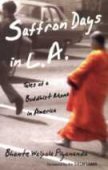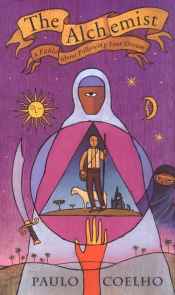Tales of a Buddhist Monk in America
© 2001 by Bhante Walpola Piyananda
Foreword by the Dalai Lama, Published by: Shambhala Publications, 187 pp.
adventures in america
What’s too often missing in the whole field of religious writing, is something that goes beyond the “belief systems” into conveying what it is like, really, to be a passionate Christian / Muslim / Buddhist / Jedi or whatever, and explain it so that others can understand. Saffron Days in L. A. is an excellent book on Buddhism for Buddhists and non-Buddhists alike since it has everything—humor, humanity, love, life stories, and yep, a pretty clear explanation about beliefs.
Bhante [the Sri Lankan title for Buddhist monks] Walpola Piyananda came to the United States on July 4, 1976, the very day of the Bicentennial celebrations. He established the first Theravada Buddhist temple in the Los Angeles area, and this book is a collection of memoirs of his experiences in the US. What great experiences they are, too! In the opening chapter, he tells about a young American convert who became a monk and soon found it unbearable to endure the constant harassment and taunts he received for wearing the traditional saffron-colored robe. Piyananda encouraged him by sharing his own difficulties wearing the Theravadin robe in L. A. including the hilarious story of waiting to meet someone in an office building and needing to make an adjustment to his robe (see sidebar).
the power of love
What strikes me most about Piyananda’s ministry is his gift for communicating gently but persuasively, with almost anyone, in almost any circumstances. One very funny story concerns how he and a friend were cornered by a threatening gang of punks on a pier. Piyananda not only turned the situation around, but had all five members of the gang asking him questions for the rest of the afternoon. Three of them later began studying Buddhism with him, and one even became a monk.
excerpt
Donning the robe is a reflection of the philosophy of dhamma, and an art in itself. Every crease and every fold has a meaning and a purpose. Carefully, I rolled one corner of the outer fold of the cloth and shaped it into a robe. While doing so, I spread the other fold of the cloth over my head, which completely covered my face. Then I wrapped the rolled fold of the robe around my neck before bringing the fold covering my head and face down over my shoulders. While my face was still covered, I saw the shadow of the woman on the couch rush past me to the elevator.
No sooner had I finished arranging my robe than I heard the fire sirens approaching around the corner. Within seconds, police cruisers and an ambulance pulled up in front of the lobby. The policemen and paramedics came running and as they approached I could see looks of utter astonishment on their faces. One officer stepped forward and ask me brusquely what I was trying to do. I was totally confused by then, and I asked the group of would-be rescuers if someone would please explain what was going on.
The first police officer said, ‘A woman called nine-one-one and reported an attempted suicide in the lobby. She told the dispatcher that an Indian guru was trying to suffocate himself with his long dress!
Saffron Days in L. A., pp.5-6
In a more serious situation, Piyananda received a phone call one night from a woman being held at gunpoint by her husband who was threatening to kill her and their children in a fit of jealous rage. Piyananda talked him into letting his wife go, got his children to safety before he could do them harm, and furthermore talked him into meeting him at the temple, surrendering his gun, and letting go of his rage. The incident ended not only without violence, but even without police involvement! A year later the man and his children were happily building new lives for themselves.
Other stories relate the challenges of helping a prostitute escape her profession and move on to a better life, the frustrations of constantly being mistaken for a Hari Krishna, explaining the Buddhist position to Christian fellow-students at Northwestern University, counseling junior monks, and the always-fun task of talking thugs out of killing him.
Piyananda uses his flair for story-telling to teach at every possible opportunity, and many a more serious student of Buddhism will find valuable information as he addresses popular misconceptions. For instance, the well-known story of the Buddha abandoning his family to live as an ascetic turns out to be false, a romanticized detail of the Buddha’s life added by Buddhaghosa in the fourth century, AD. Numerous earlier writings show that the Buddha left his family with their permission. Piyananda is not only a great storyteller, but an distinguished scholar who holds doctorates from both UCLA and the College of Buddhist Studies in Los Angeles.
Piyananda’s example is also likely to shatter the false notion which some non-Buddhists hold of Buddhism as lacking an ethic of service and social involvement. Piyananda lives a life of compassionate service, helping new immigrants from Southeast Asia, curing an alcoholic man by chanting with him nightly, and urging non-violence and forgiveness even after terrible tragedy (he delivered the eulogy for the funeral service of nine people killed in a massacre at a temple in Arizona). Piyananda’s renunciation of attachments and pleasures in order to freely give his love to all reminds me of no one so much as St. Francis of Assisi, the one who grew rich in having nothing but the blessings of God himself. Indeed, Franciscans are often attracted to Buddhism, and for good reason—the Buddha’s life and Francis’ are full of parallels. Furthermore, Jesus’ and Buddha’s life also have many parallels.
Whether you are Christian, Buddhist, both, or other, and whether you have never read about the faith before or have been practicing it for years, read Saffron Days. It will make you laugh, teach you, and inspire you.





